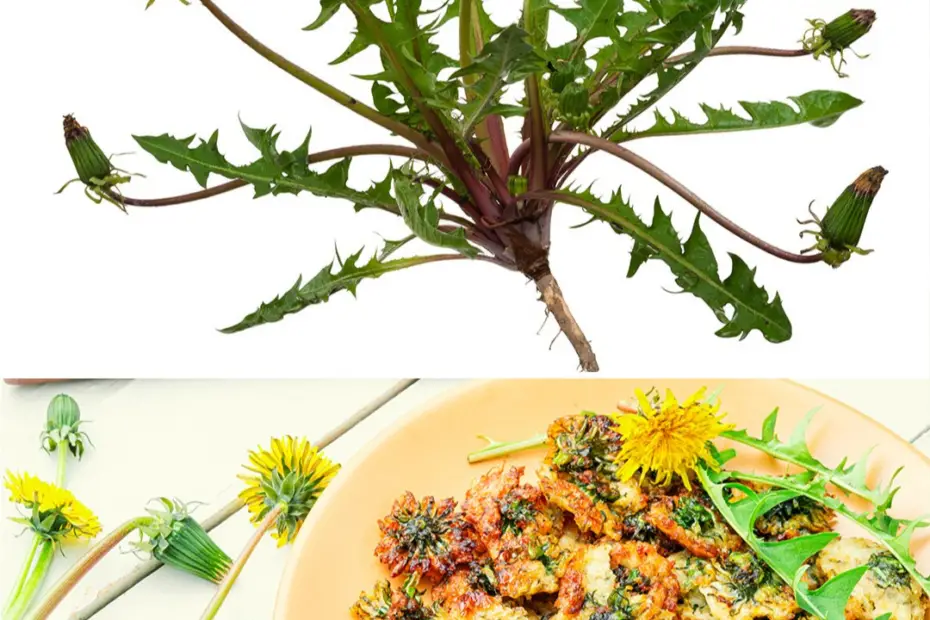
Often dismissed as a pesky weed, the dandelion (Taraxacum officinale) is in fact a wonder of nature, offering a wide range of uses in both the medicinal and culinary worlds. It is a familiar sight gracing lawns and gardens with its bright yellow flowers and uniquely serrated leaves. Beyond its common facade, dandelion holds a multitude of uses that have been recognized and utilized for generations. This piece delves into the diverse medicinal and nutritional uses of this herb, examining every part from the flowers and stems to the leaves and roots.
Dandelion flowers: A symphony of medicinal and culinary possibilities
The golden petals of dandelion flowers are a feast for the eyes and have many uses in conventional medicine and culinary practice.
Medical applications
1 Digestive Enhancer: A concoction of dandelion flowers has been a historic remedy for digestive complaints, mitigating issues like bloating, constipation, and indigestion. It’s also a natural diuretic, supporting optimal kidney function.
2 Inflammation Reduction: The blossoms are rich in antioxidants and possess anti-inflammatory properties, invaluable in managing inflammatory diseases such as arthritis and gout.
Culinary Uses
1 Colorful Topping: The flowers serve as a visually appealing and tasty garnish for diverse dishes, contributing a subtle sweetness and vibrant hue.
2 Dandelion Liquor: The petals are integral to crafting dandelion wine, a distinctive homemade concoction, blending floral and citrus notes.
Dandelion Stems: A Crunchy Surprise
Although less used, dandelion stems can be a crunchy addition to various dishes.
Culinary Uses
1 Preserved Stems**: They can be preserved to give a crunchy, tangy twist to salads, sandwiches, and appetizers.
2 Stir-Fried Delight: Dandelion stems add an unusual texture when stir-fried with vegetables and sauces in some culinary traditions.
Dandelion Leaves: Nutrient-Rich Foliage
The leaves are the most well-known and versatile part of the dandelion, rich in nutrients and boasting medicinal and culinary uses.
Medical applications
1 Body Detoxifier: The leaves serve as natural detox agents, purifying the liver and maintaining its health, particularly beneficial for liver disorders.
2 Diuretic Benefits: Their diuretic nature aids in eliminating excess water and toxins from the body, proving advantageous in treating edema and hypertension.
Culinary applications
1 Salad Component: The slightly bitter leaves are a nutritious enhancement to salads and are a rich source of vitamins A, C, and K, and various minerals.
2 Sautéed Greens: They can be sautéed akin to spinach or collard greens, with garlic and olive oil enhancing their flavor.
Dandelion Roots: A Medicinal Treasure
The roots are valued for their profound medicinal properties and can be consumed in a variety of forms.
Medical applications
1 Liver Protector: The roots, in tea or supplement form, are renowned for fostering liver health by elevating bile production and mitigating liver inflammation.
2 Digestive Aid: They facilitate healthy digestion, easing conditions like constipation and bloating.
3 Blood Sugar Regulator: Preliminary research indicates that the roots might aid in managing blood sugar levels, beneficial for diabetics.
Rezept für knusprigen Löwenzahn
Ingredients:
- Freshly plucked, young dandelion flowers
- 1 cup all-purpose flour
- ½ cup cornmeal
- 1 teaspoon salt
- ½ teaspoon black pepper
- ½ teaspoon paprika
- ¼ teaspoon cayenne pepper (adjustable to taste)
- 1 cup buttermilk
- Vegetable oil for frying
- Dipping sauces (e.g., ranch, honey mustard)
Instructions:
1 Preparation: Harvest and clean the dandelions meticulously, removing green parts and insects, then rinse and pat dry.
2 Batter Preparation: Whisk together the dry ingredients in one bowl and pour buttermilk into another.
3 Dipping and Coating: Heat oil to 350°F (175°C). Dip flowers in buttermilk, drain excess, and roll in batter.
4 Frying: Fry coated flowers until golden brown, then drain excess oil.
5 Serving: Serve hot with desired dipping sauces.
6 Enjoying: Relish this unique, crispy snack!
Conclusion
A beacon of natural versatility, the multifaceted dandelion offers a wealth of health and culinary benefits from its flowers, stems, leaves and roots. It is a valued but overlooked herb that offers natural remedies and diverse nutrition. The next time those golden flowers appear, consider adding them to a nutritious salad or soothing tea and discover the amazing potential of this common yet extraordinary plant.
